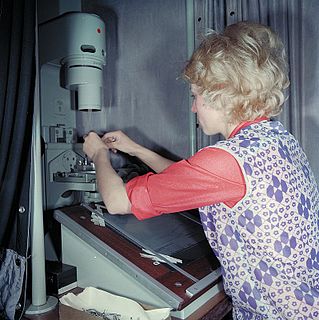Proficiency schemes
Proficiency schemes involve the distribution of blinded reference materials to subscription laboratories, and the subsequent scoring and assessment of the proficiency of those labs in their molecular diagnostic testing.
Proficiency schemes are usually organized by not-for-profit organizations, usually government affiliated, to which hundreds of laboratories may subscribe. These schemes are funded with the subscription fees paid by each member laboratory.
Proficiency schemes have historically relied upon patient biopsies with known mutation status for distribution to member laboratories. However, due to the significant rise in the number of labs performing molecular testing (in turn caused by the increase in the number of available targeted drugs whose prescription is linked to the presence or absence of a particular biomarker), patient samples are becoming an unsustainable source of reference material. Increasingly, proficiency scheme organizers are turning to genetically modified cell lines as a sustainable and well defined source of reference material.
Some of the largest proficiency scheme organizers in the world include:
Molecular genetics is the field of biology that studies the structure and function of genes at a molecular level and thus employs methods of both molecular biology and genetics. The study of chromosomes and gene expression of an organism can give insight into heredity, genetic variation, and mutations. This is useful in the study of developmental biology and in understanding and treating genetic diseases.
Comparative genomic hybridization is a molecular cytogenetic method for analysing copy number variations (CNVs) relative to ploidy level in the DNA of a test sample compared to a reference sample, without the need for culturing cells. The aim of this technique is to quickly and efficiently compare two genomic DNA samples arising from two sources, which are most often closely related, because it is suspected that they contain differences in terms of either gains or losses of either whole chromosomes or subchromosomal regions. This technique was originally developed for the evaluation of the differences between the chromosomal complements of solid tumor and normal tissue, and has an improved resolution of 5–10 megabases compared to the more traditional cytogenetic analysis techniques of giemsa banding and fluorescence in situ hybridization (FISH) which are limited by the resolution of the microscope utilized.

ATCC or the American Type Culture Collection is a nonprofit organization which collects, stores, and distributes standard reference microorganisms, cell lines and other materials for research and development. Established in 1925 to serve as a national center for depositing and distributing microbiological specimens, ATCC has since grown to distribute in over 150 countries. It is now the largest general culture collection in the world.

Personalized medicine, precision medicine, or theranostics is a medical model that separates people into different groups—with medical decisions, practices, interventions and/or products being tailored to the individual patient based on their predicted response or risk of disease. The terms personalized medicine, precision medicine, stratified medicine and P4 medicine are used interchangeably to describe this concept though some authors and organisations use these expressions separately to indicate particular nuances.

QIAGEN is a provider of sample and assay technologies for molecular diagnostics, applied testing, academic and pharmaceutical research. Consolidated under the Dutch holding QIAGEN N.V., the company operates more than 35 offices in over 25 countries. QIAGEN’s shares are listed at the NYSE and at the Frankfurt Stock Exchange in the Prime Standard. Peer M. Schatz is the company’s chief executive officer. The main operative headquarters are located in Hilden, Germany.
Biomarker discovery is a medical term describing the process by which biomarkers are discovered.
Many commonly used blood tests in medicine are biomarkers. There is interest in biomarker discovery on the part of the pharmaceutical industry; blood-test or other biomarkers could serve as intermediate markers of disease in clinical trials, and as possible drug targets.
In medicine, a biomarker is a measurable indicator of the severity or presence of some disease state. More generally a biomarker is anything that can be used as an indicator of a particular disease state or some other physiological state of an organism.
Noninvasive genotyping is a modern technique for obtaining DNA for genotyping that is characterized by the indirect sampling of specimen, not requiring harm to, handling of, or even the presence of the organism of interest. Beginning in the early 1990s, with the advent of PCR, researchers have been able to obtain high-quality DNA samples from small quantities of hair, feathers, scales, or excrement. These noninvasive samples are an improvement over older allozyme and DNA sampling techniques that often required larger samples of tissue or the destruction of the studied organism. Noninvasive genotyping is widely utilized in conservation efforts, where capture and sampling may be difficult or disruptive to behavior. Additionally, in medicine, this technique is being applied in humans for the diagnosis of genetic disease and early detection of tumors. In this context, invasivity takes on a separate definition where noninvasive sampling also includes simple blood samples.
A biomarker, or biological marker, is defined as a "cellular, biochemical or molecular alteration in cells, tissues or fluids that can be measured and evaluated to indicate normal biological processes, pathogenic processes, or pharmacological responses to a therapeutic intervention."Biomarkers characterize disease progression starting from the earliest natural history of the disease. Biomarkers assess disease susceptibility and severity, which allows one to predict outcomes, determine interventions and evaluate therapeutic responses. From a forensics and epidemiologic perspective, biomarkers offer unique insight about the relationships between environmental risk factors.
The Cancer Genome Project is part of the cancer, aging, and somatic mutation research based at the Wellcome Trust Sanger Institute in The United Kingdom. It aims to identify sequence variants/mutations critical in the development of human cancers. Like The Cancer Genome Atlas project within the United States, the Cancer Genome Project represents an effort in the War on Cancer to improve cancer diagnosis, treatment, and prevention through a better understanding of the molecular basis of the disease. The Cancer Genome Project was launched by Michael Stratton in 2000, and Peter Campbell is now the group leader of the project. The project works to combine knowledge of the human genome sequence with high throughput mutation detection techniques.
A biorepository is a biological materials repository that collects, processes, stores, and distributes biospecimens to support future scientific investigation Biorepositories can contain or manage specimens from animals, including humans, and many other living organisms. Vertebrates, invertebrates, arthropods, and other life forms are just a few of the many classes of living organisms which can be studied by preserving and storing samples taken.

A geneticist is a biologist who studies genetics, the science of genes, heredity, and variation of organisms.
DNA Specimen Provenance Assignment (DSPA) also known as DNA Specimen Provenance Assay, is a molecular diagnostic test used to definitively assign biopsy specimen identity and establish specimen purity during the diagnostic testing cycle for cancer and other histopathological conditions. The term first appeared in the 2011 scientific paper, “The Changing Spectrum of DNA-Based Specimen Provenance Testing in Surgical Pathology,” published in the American Journal of Clinical Pathology, which built upon concepts described in an earlier paper published in the Journal of Urology.

Molecular diagnostics is a collection of techniques used to analyse biological markers in the genome and proteome—the individual's genetic code and how their cells express their genes as proteins—by applying molecular biology to medical testing. The technique is used to diagnose and monitor disease, detect risk, and decide which therapies will work best for individual patients.

Horizon Discovery Group plc ("Horizon"), is a gene editing company that designs and engineers genetically modified cells and then applies them in research and clinical applications that advance human health.

Circulating tumor DNA (ctDNA) is tumor-derived fragmented DNA in the bloodstream that is not associated with cells. ctDNA should not be confused with cell-free DNA (cfDNA), a broader term which describes DNA that is freely circulating in the bloodstream, but is not necessarily of tumor origin. Because ctDNA may reflect the entire tumor genome, it has gained traction for its potential clinical utility; “liquid biopsies” in the form of blood draws may be taken at various time points to monitor tumor progression throughout the treatment regimen.
A liquid biopsy, also known as fluid biopsy or fluid phase biopsy, is the sampling and analysis of non-solid biological tissue, primarily blood. Like traditional biopsy this type of technique is mainly used as a diagnostic and monitoring tool for diseases such as cancer, with the added benefit of being largely non-invasive. Therefore, it can also be done more frequently which can better track tumors and mutations over a duration of time. It may also be used to validate the efficiency of a cancer treatment drug by taking multiple liquid biopsy samples in the span of a few weeks. The technology may also prove beneficial for patients after treatment to monitor relapse.
CAncer Personalized Profiling by deep Sequencing (CAPP-Seq) is a sensitive method used to quantify DNA in cancer. It measures Cell-free tumor DNA which is released from dead tumor cells into the blood. This method can be generalized for any cancer type that is known to have recurrent mutations. CAPP-Seq can detect one molecule of mutant DNA in 10,000 molecules of healthy DNA.

Personalized onco-genomics is a growing area of interest in the field of oncology and genomics that is focused on utilizing whole genome analysis to make rational clinical treatment decisions for each individual patient. The idea for this program was devised at the Genome Science Center and is currently being led by Dr. Marco Marra and Dr. Janessa Laskin. Genome instability has been identified as one of the underlying hallmarks of cancer. The genetic diversity of cancer cells promotes multiple other cancer hallmark functions that help them survive in their microenvironment and eventually metastasize. The pronounced genomic heterogeneity of tumors has led researchers to develop an approach that assesses each individual’s cancer to identify targeted therapies that can halt cancer growth. Identification of these “drivers” and corresponding medications used to possibly halt these pathways are becoming increasingly important in the treatment of cancer.










